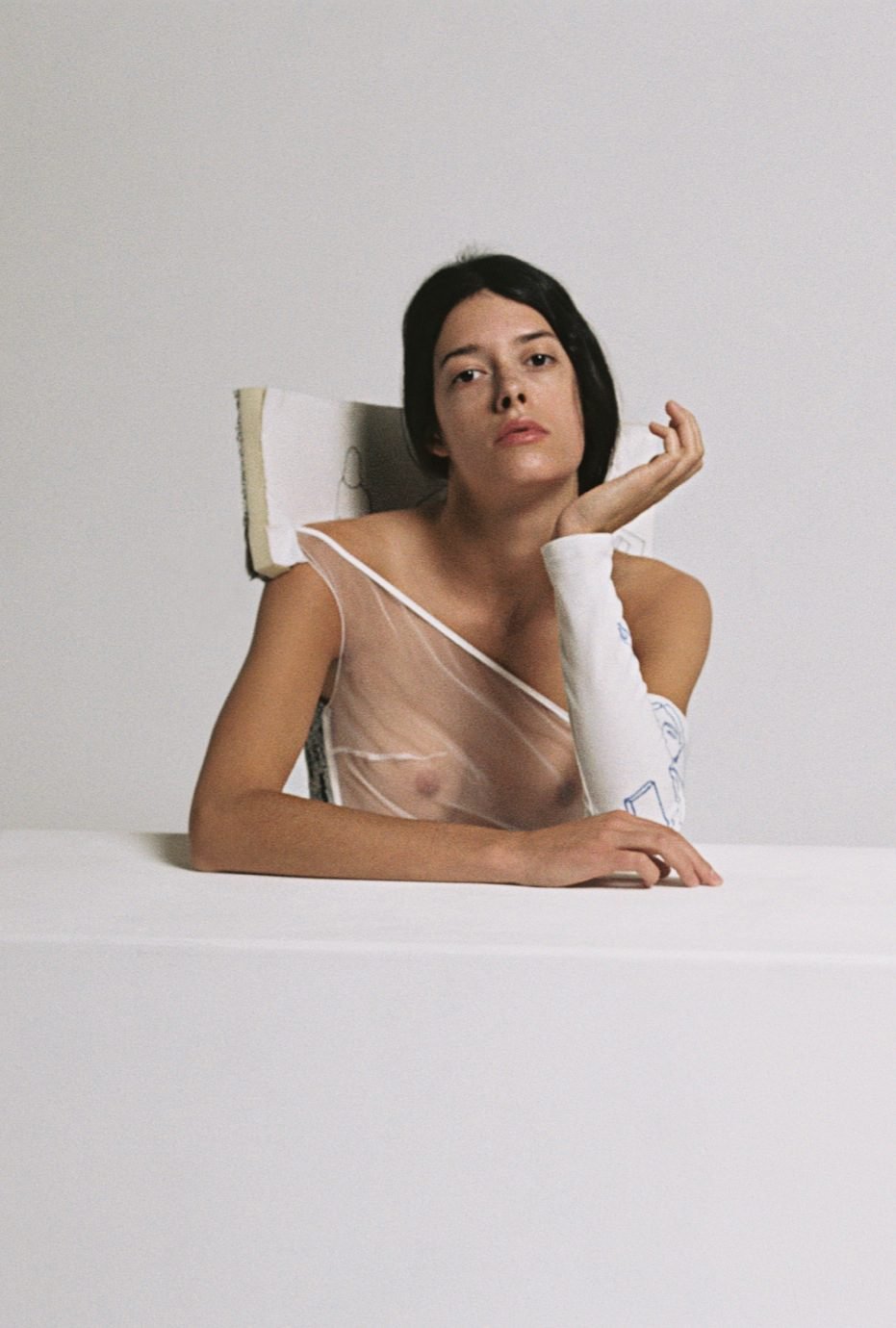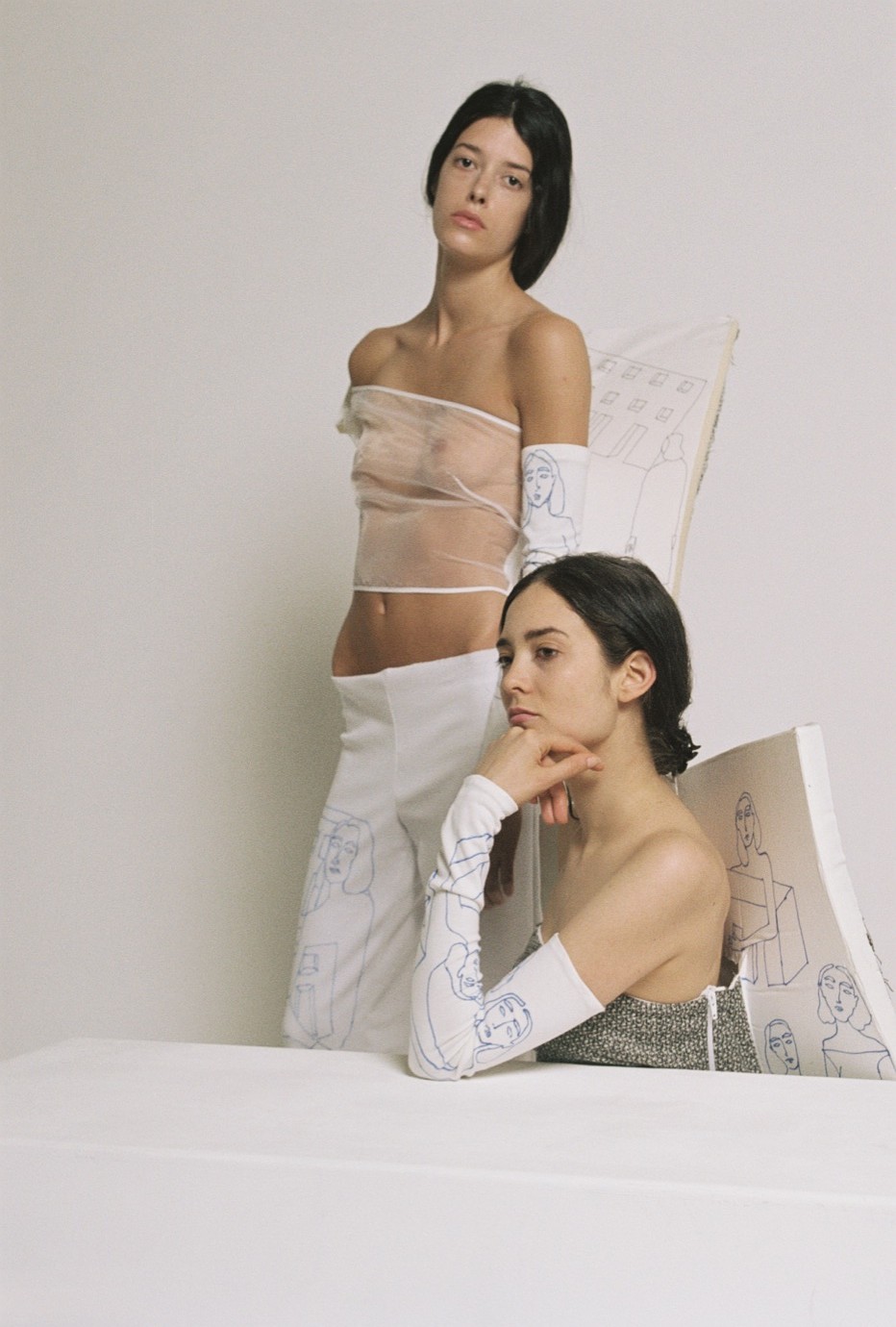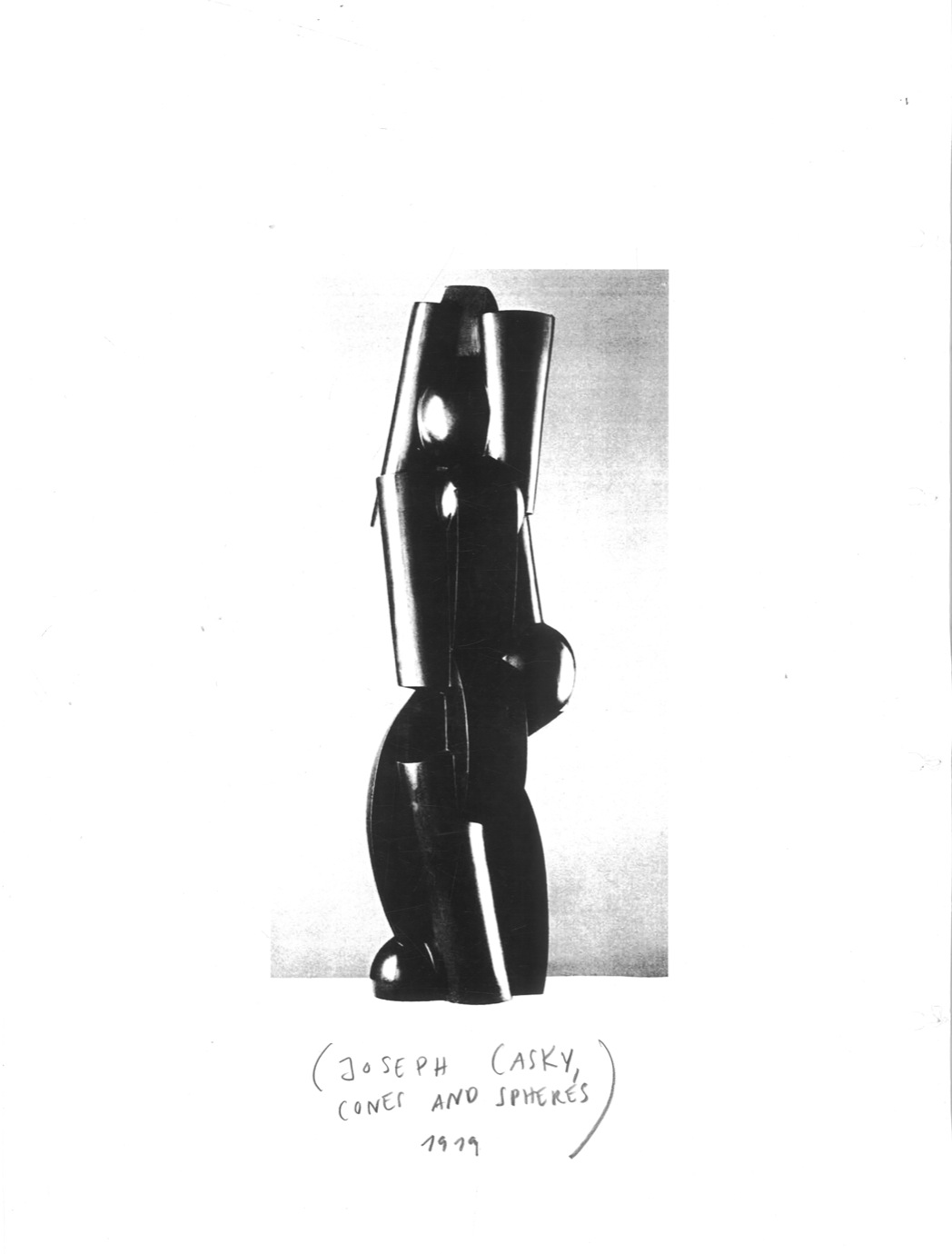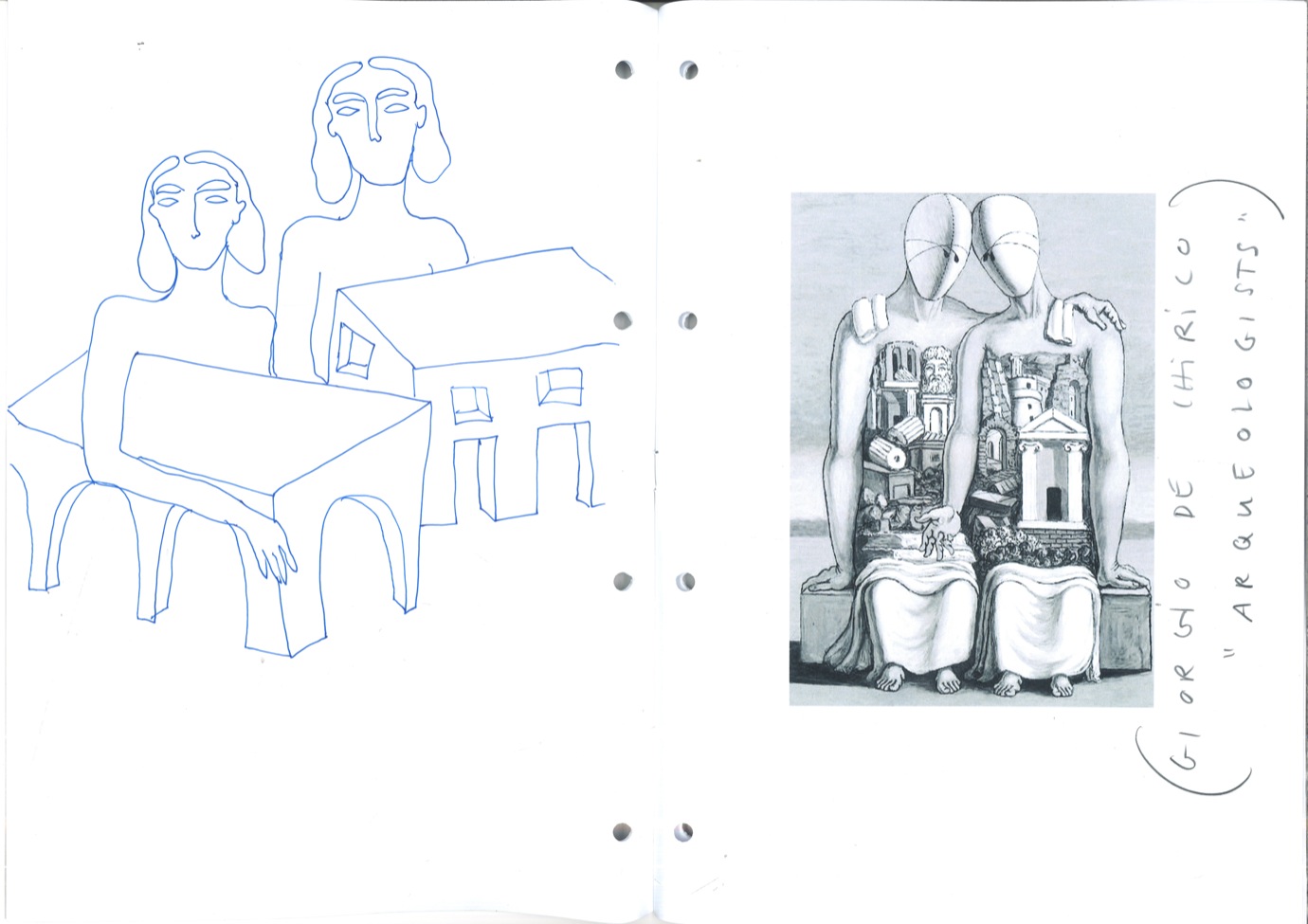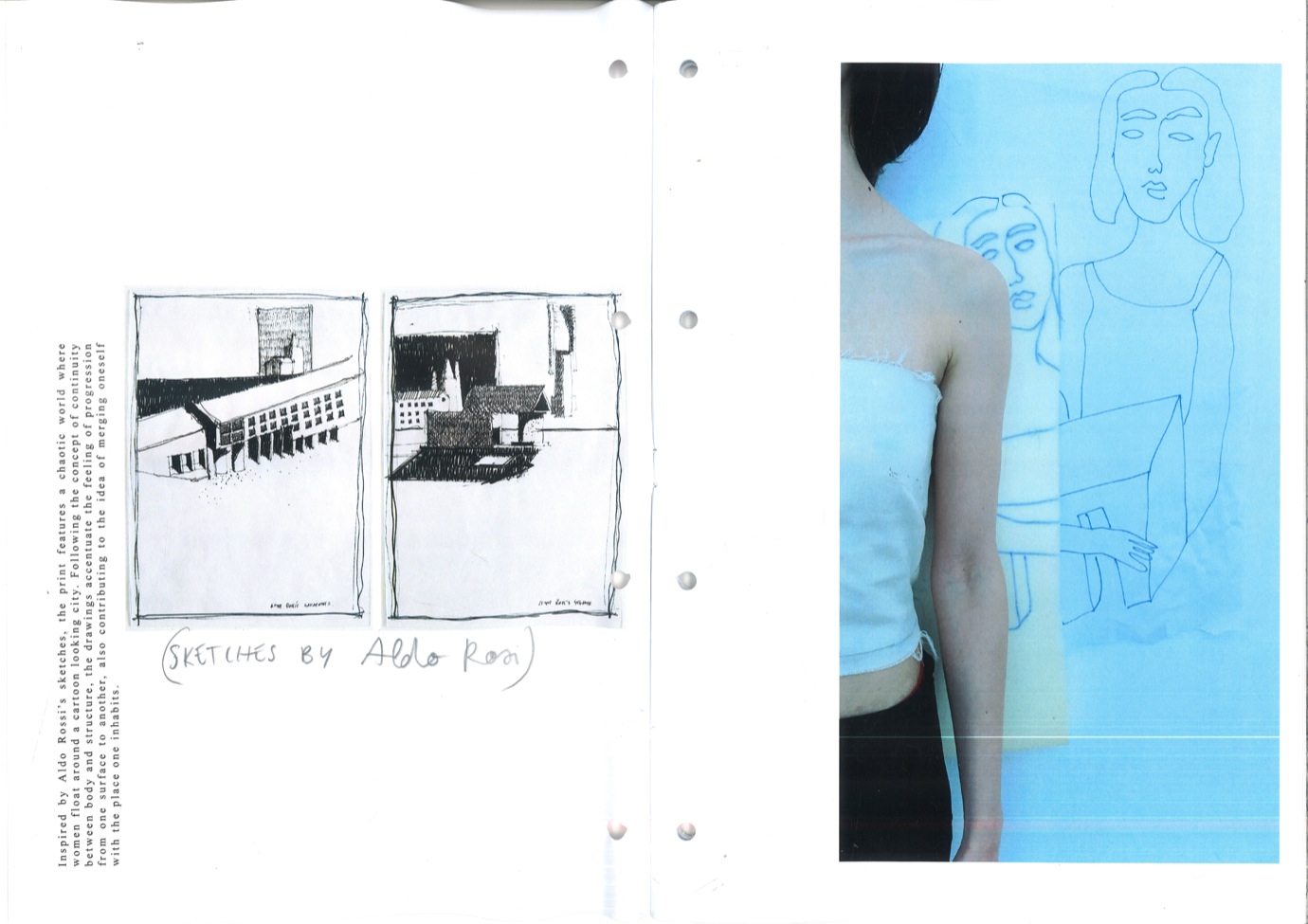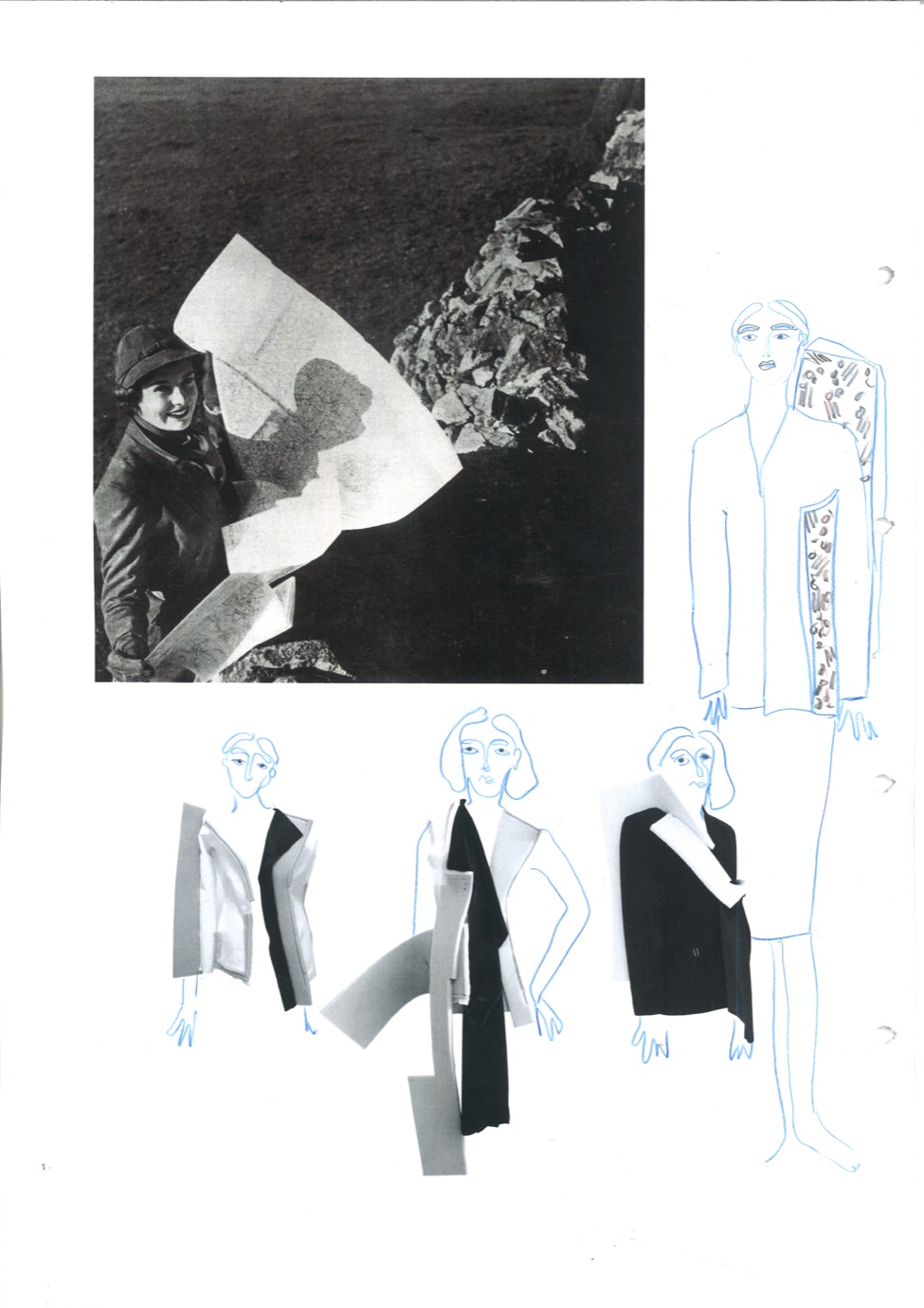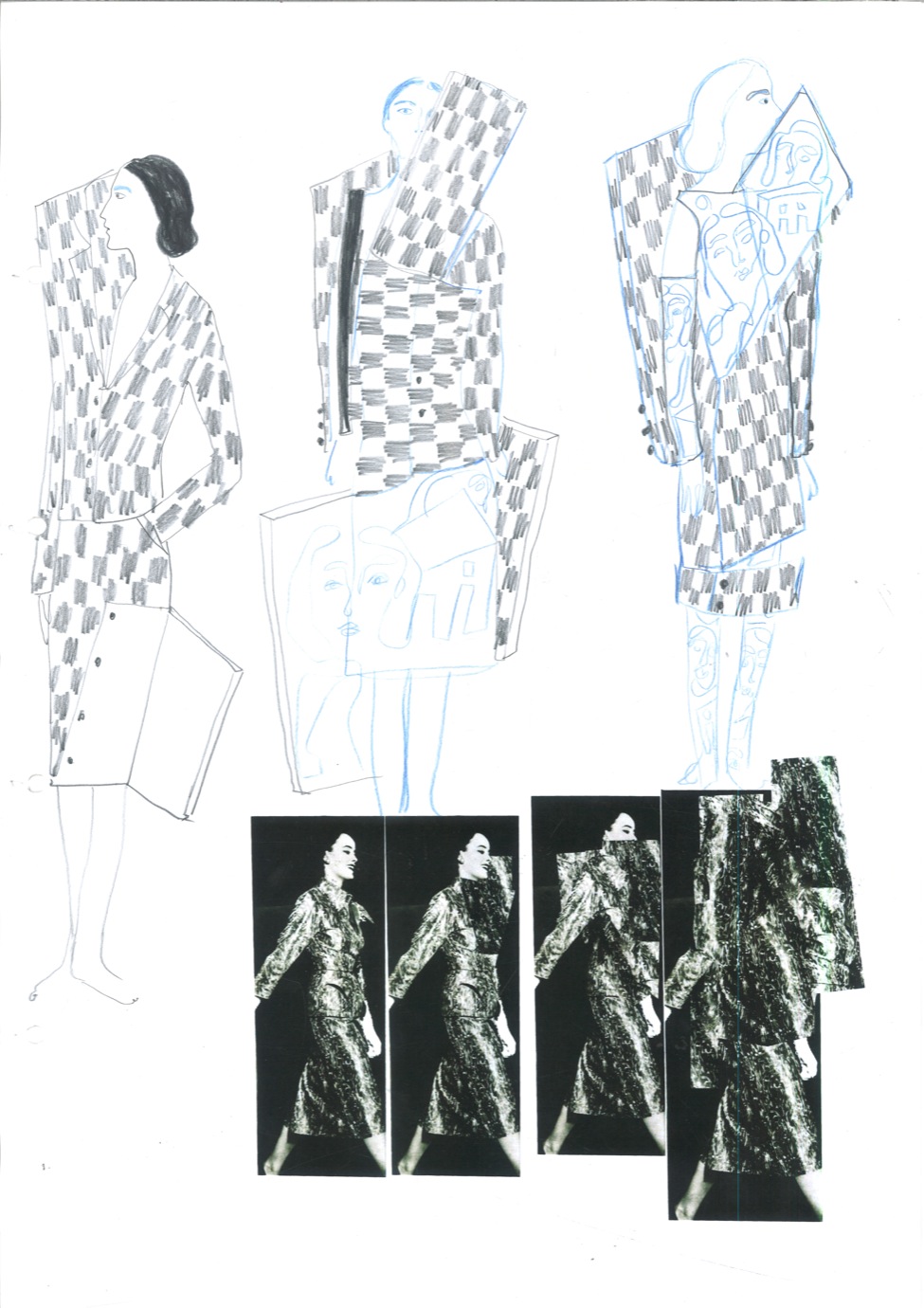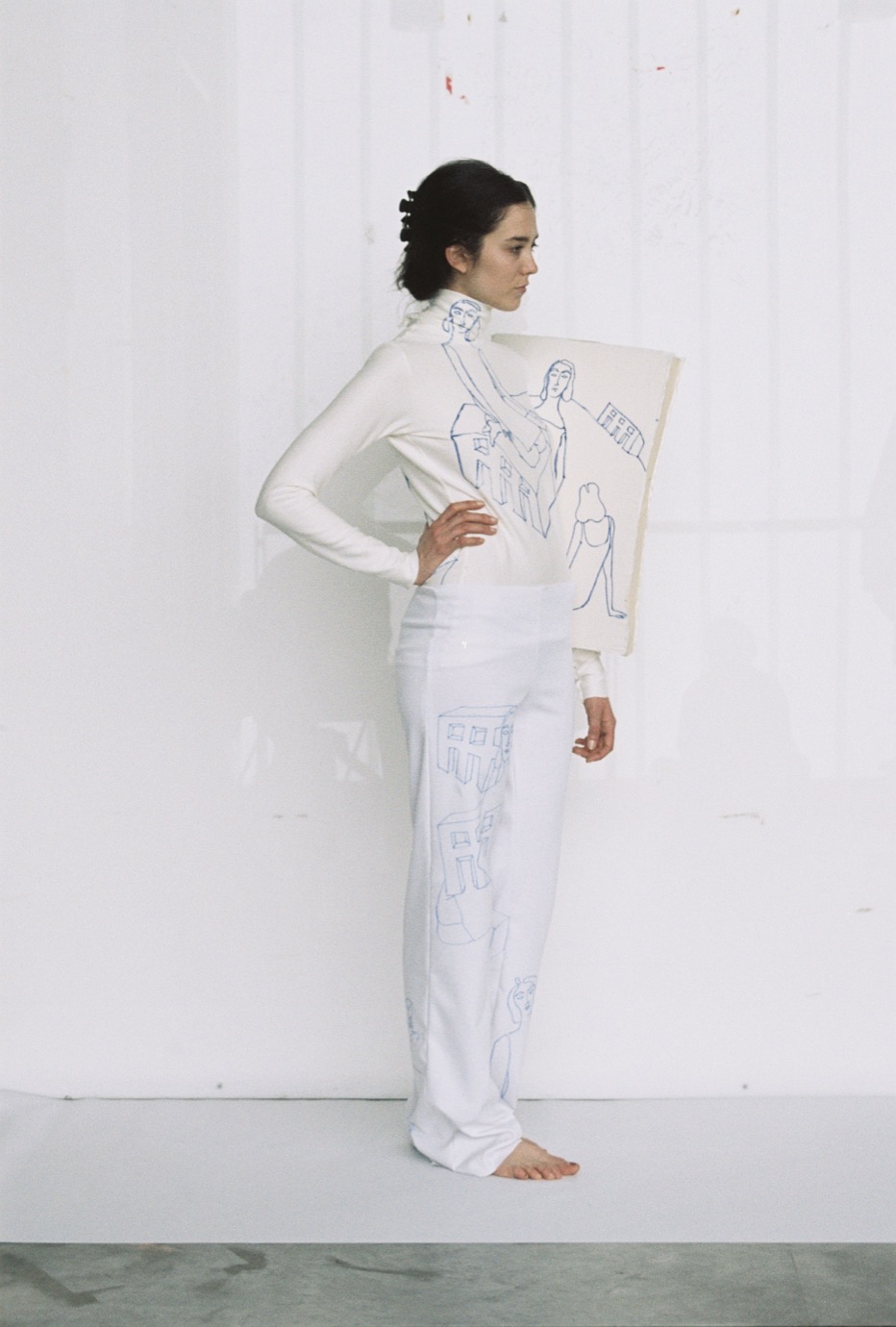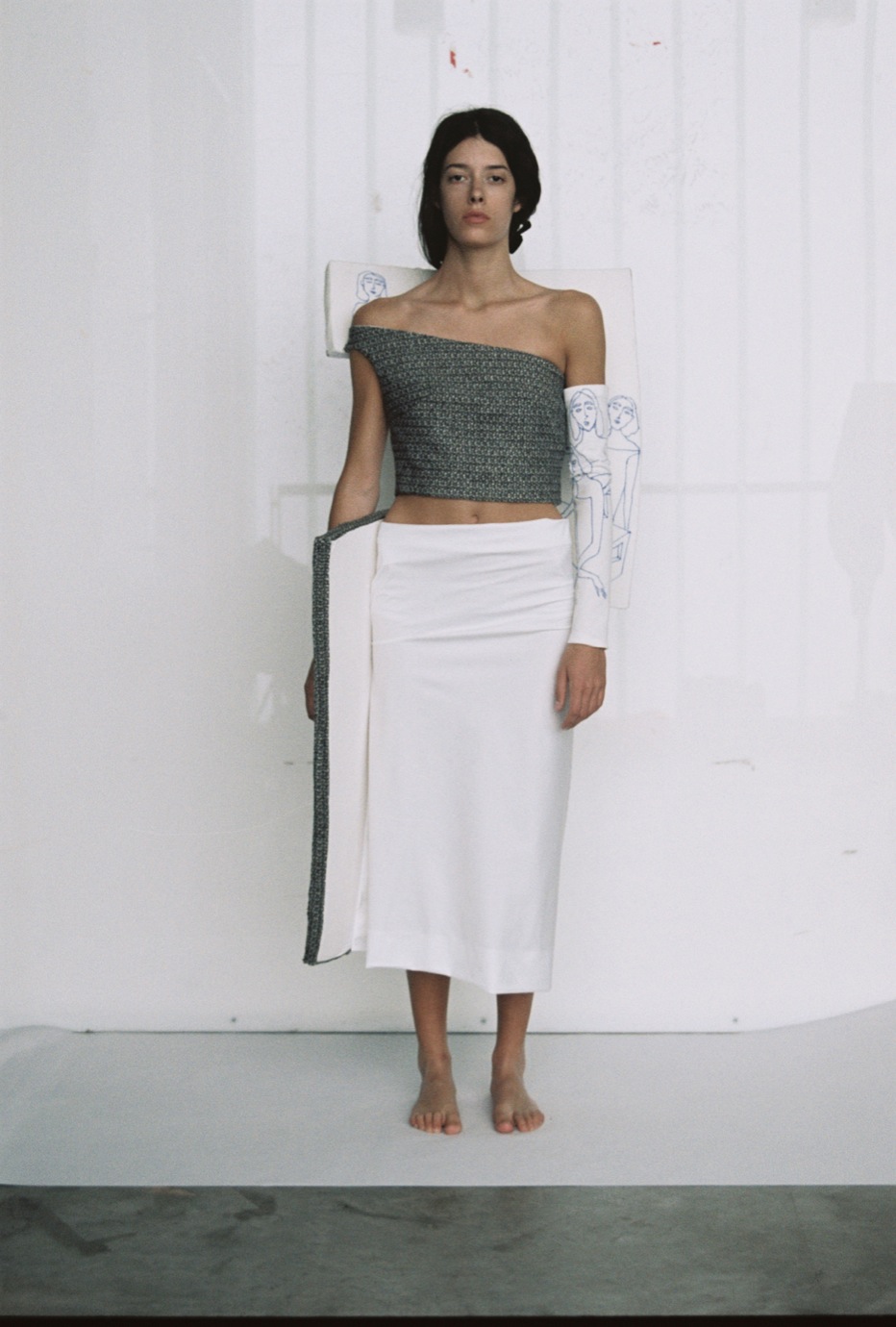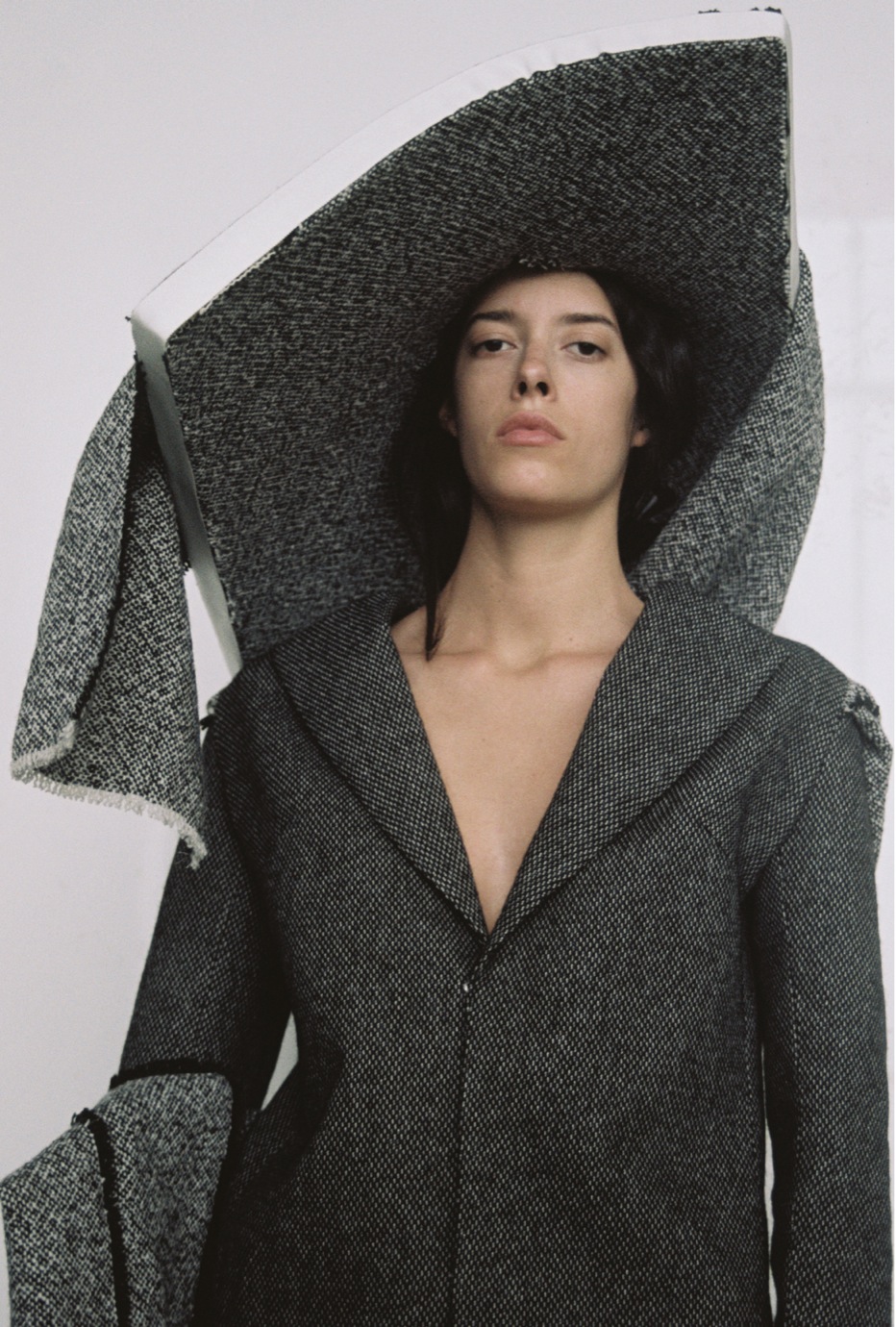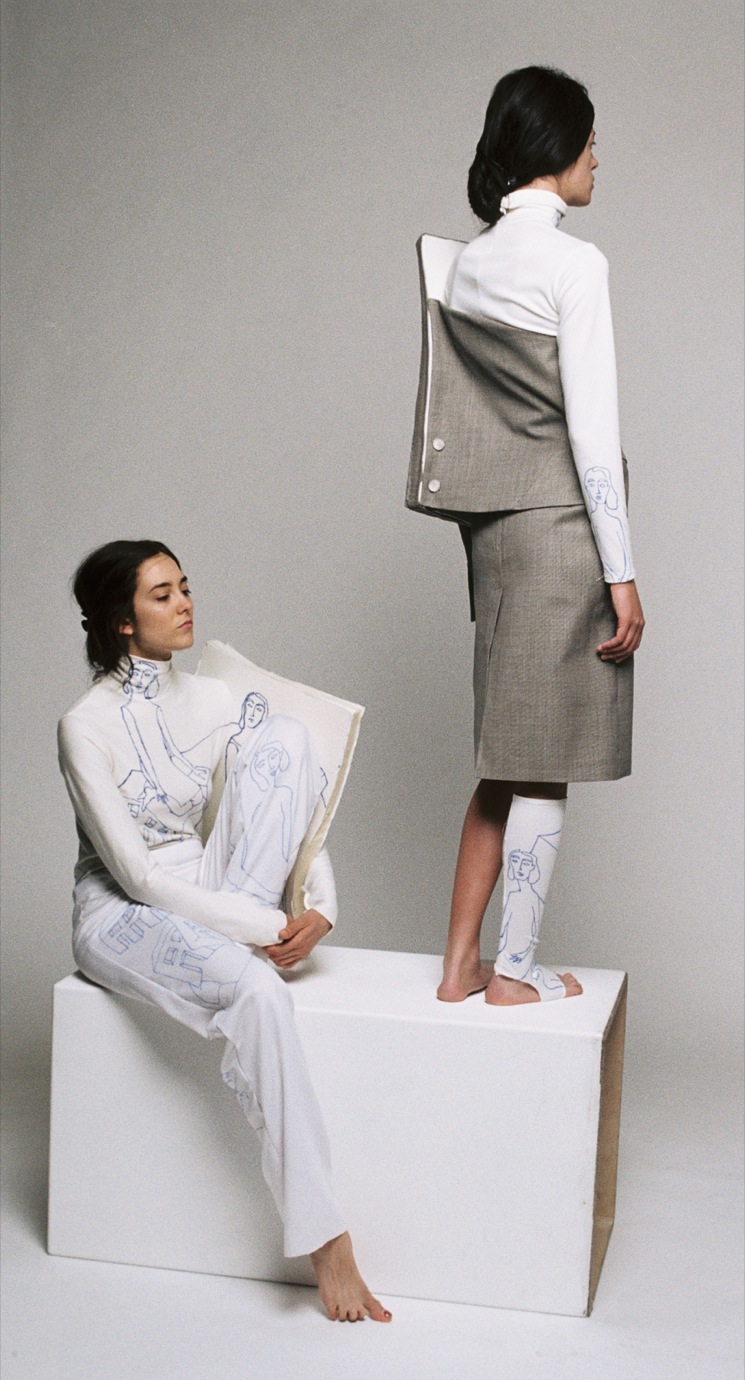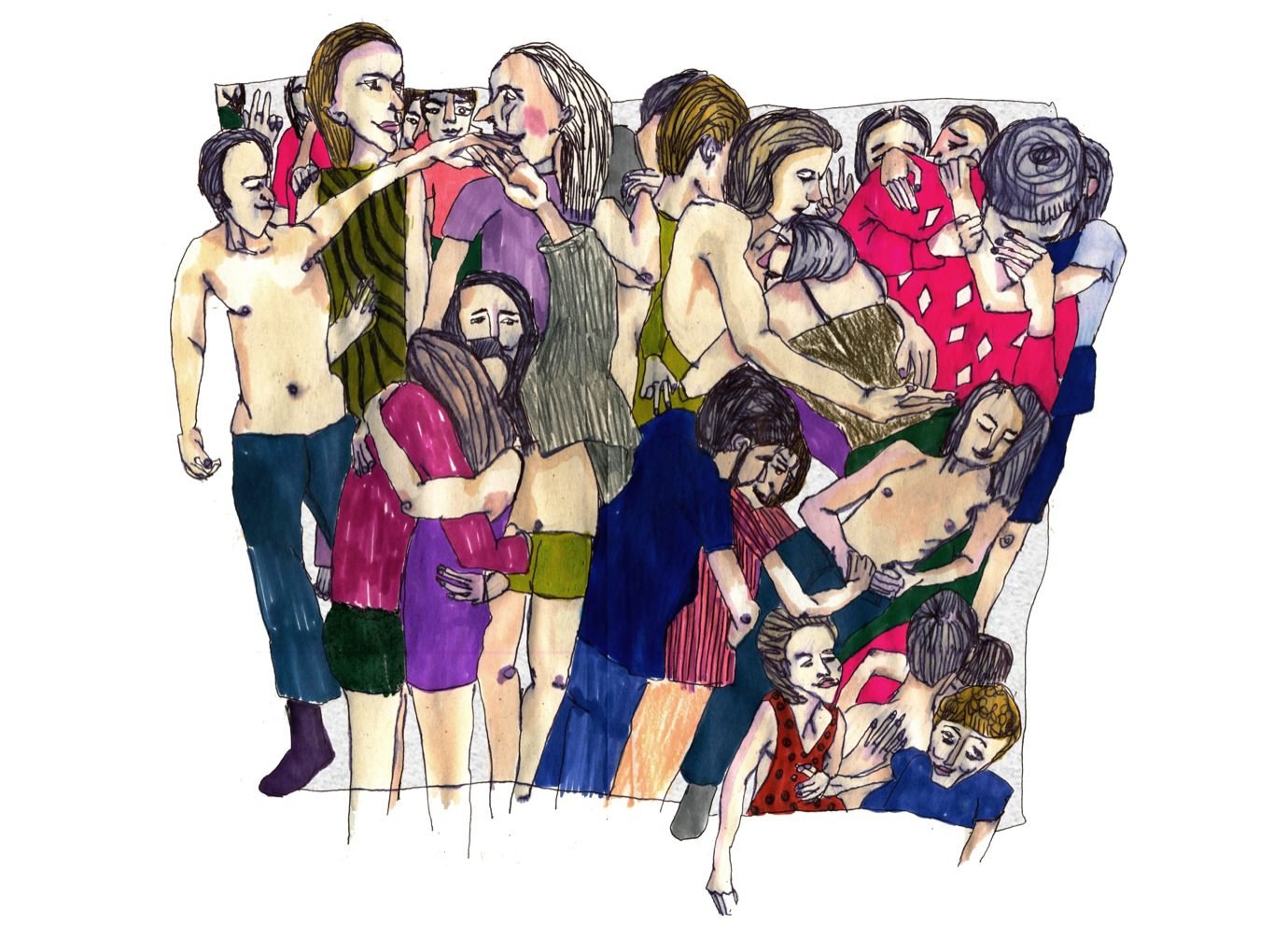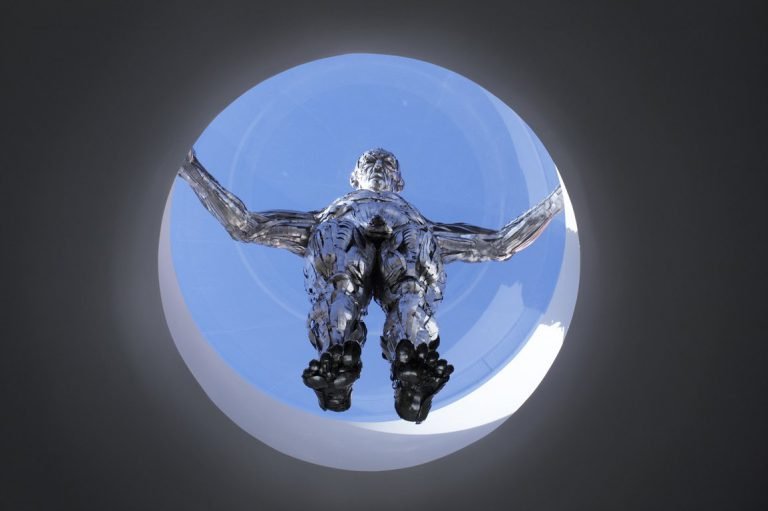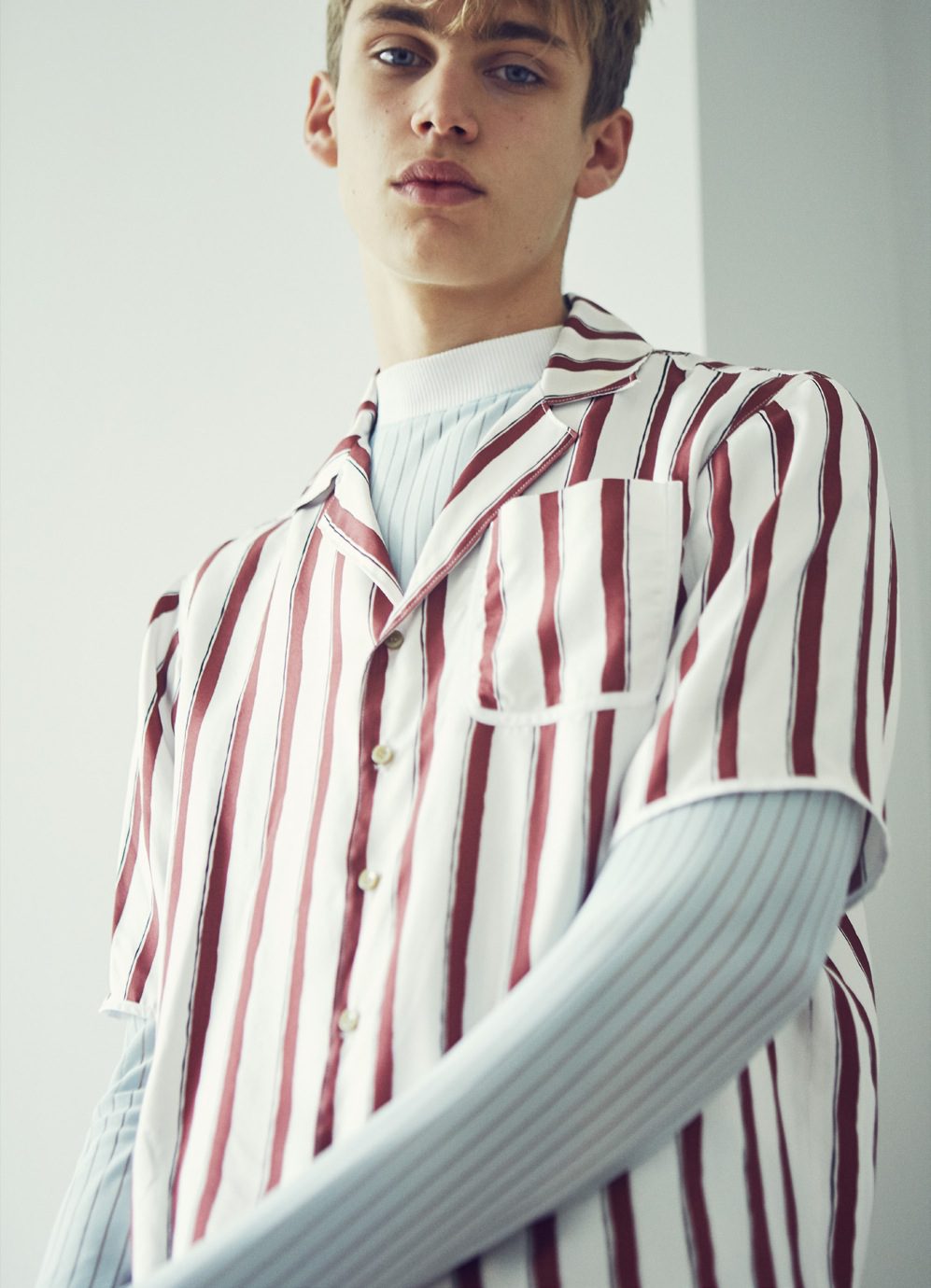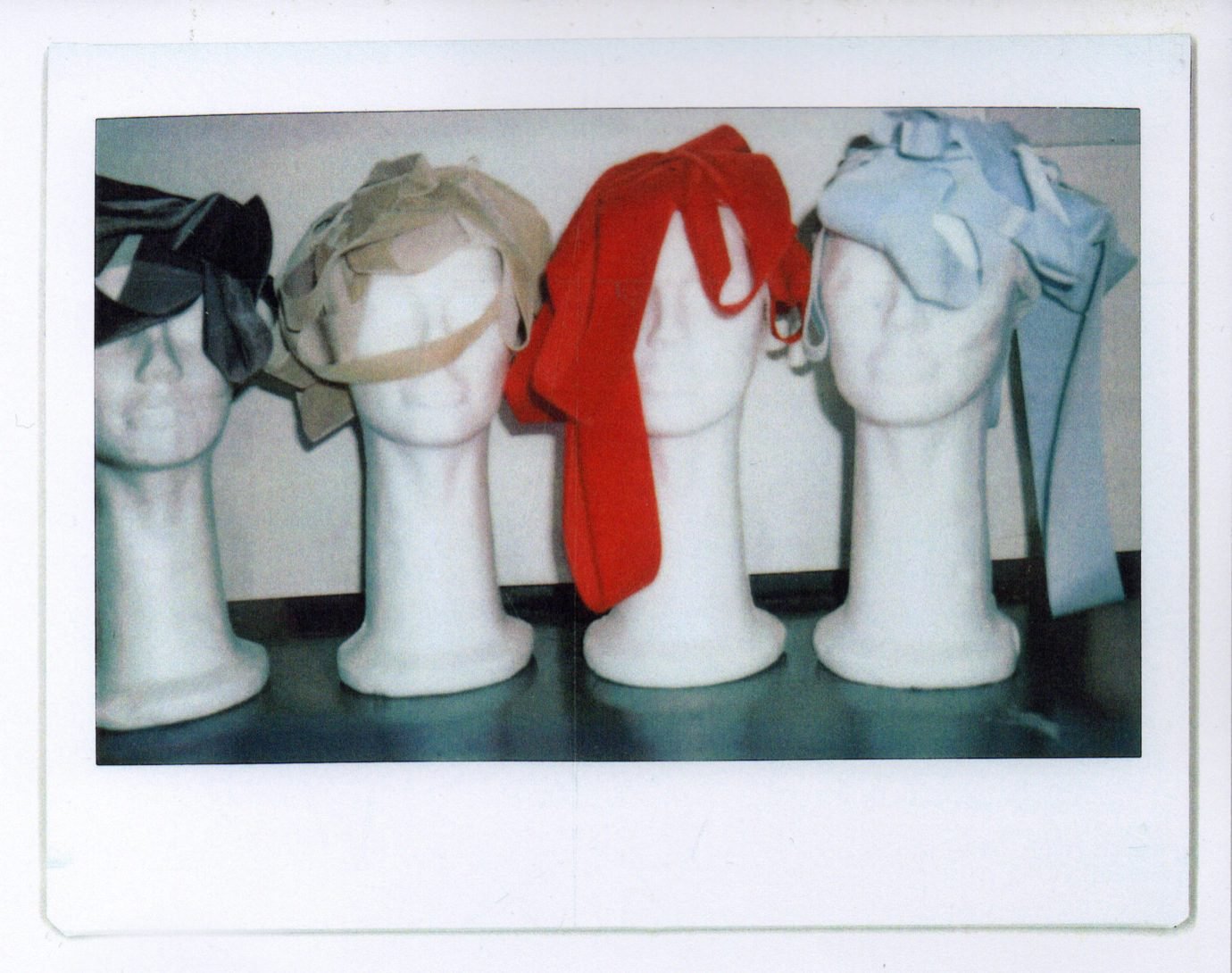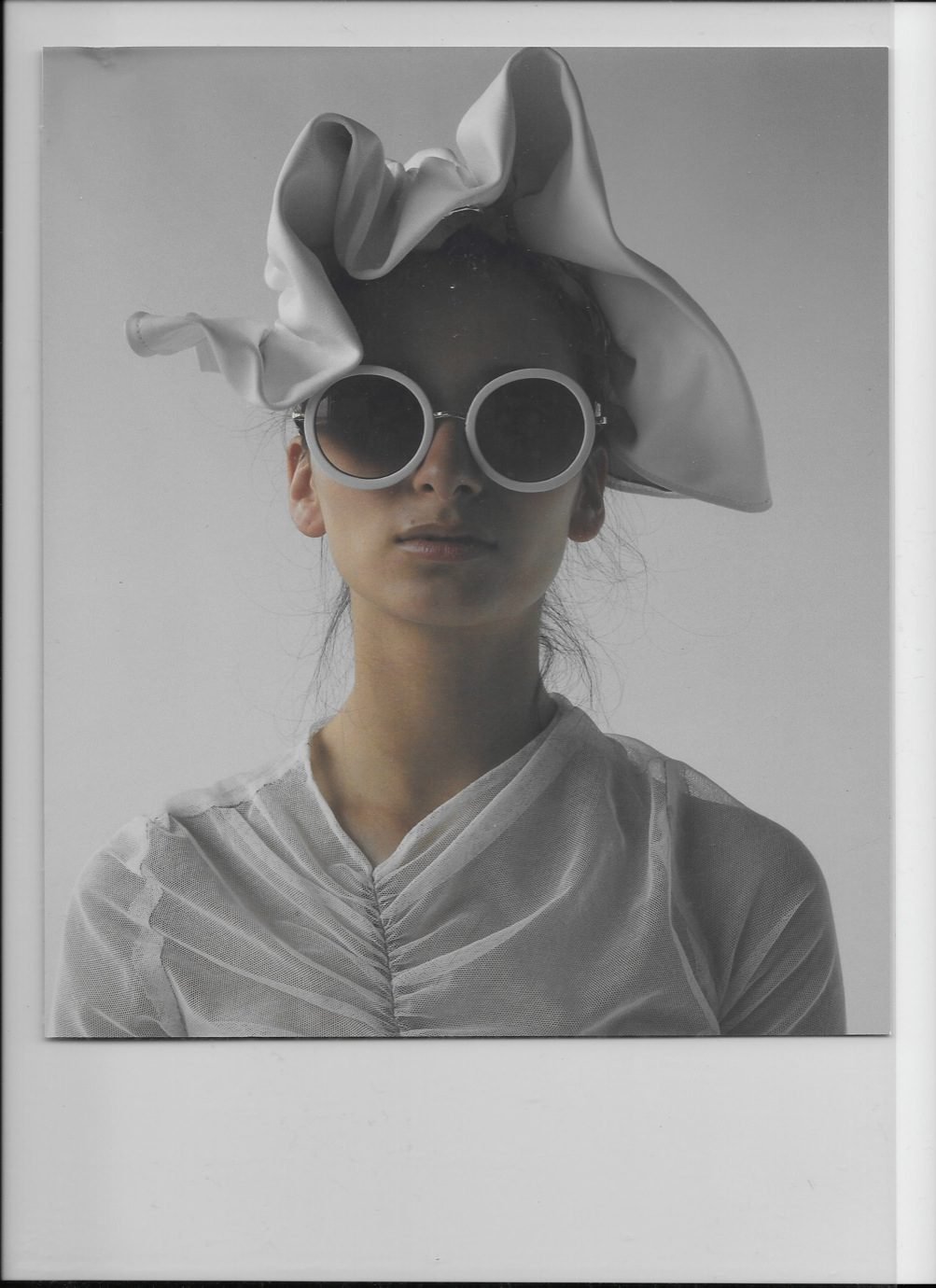Claudia was born and raised in Barcelona, and from a young age, she dreamt of pursuing something creative. “I’ve been filling sketchbooks with drawings of women ever since I can remember,” she explains, as she recalls her early years of creativity. At the age of 15, she enrolled at Central Saint Martins for a summer course in fashion design, and she was immediately hooked. After high school, she eagerly went straight to the foundation course of the same institution, before embarking on a BA in Fashion Design and Marketing.
Claudia’s garments appear as sculptural manipulations and distortions of the human shape and body. For her graduate collection, viaduct and wall-like architectural structures merge with recognisable, classically tailored pieces. Using foam planes bonded with tweed, she explores sculptural territory but through fashion-familiar means: “I wanted to use very traditional fabrics that would make the structural silhouette more relatable,” she says. She began applying bonding techniques to tailoring in her second year, when manufacturer Dyloan Studios came to do a collaborative project with her pathway, Fashion Design and Marketing.
“THE EFFECT I WANTED TO ACHIEVE WITH THESE STRAIGHT PLANES THAT FIT ON TO THE BODY WAS THAT OF A JACKET WORN BY A PERSON, BUT BUTTONED ONTO A WALL.“

